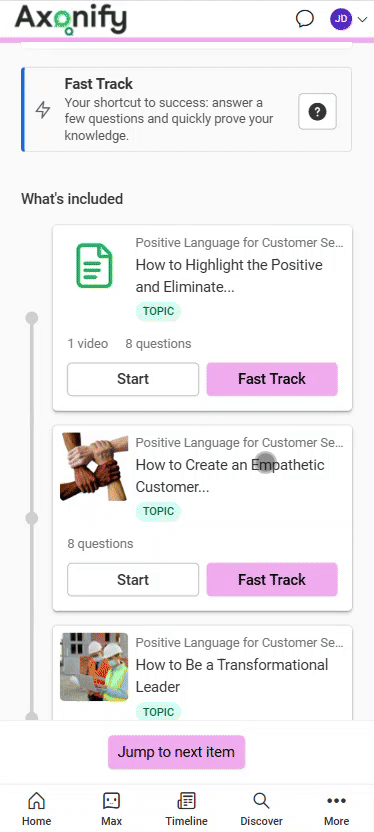30 essential performance metrics for frontline employees

Measuring employee performance effectively has become more critical than ever in 2025. According to SHRM’s 2025 State of the Workplace report, only 57% of HR professionals rated their performance management systems as effective, while just 41% of workers agreed. This disconnect reveals a significant opportunity for organizations to revolutionize how they track and improve employee performance metrics.
For frontline-focused organizations like retail chains, distribution centers, and call centers, the stakes are even higher. Research has shown that top-performing employees are up to four times as productive as average workers, with the top 5% contributing 26% of total output. Identifying and nurturing these high performers through strategic performance measurement is essential for business success.
The challenge lies in selecting the right performance metrics for employees that align with your business goals while providing actionable insights.
This comprehensive guide covers 30 essential employee performance metrics, implementation frameworks, and best practices based on the latest industry research.
Understanding employee performance metrics: Beyond basic tracking
Performance metrics for employees serve as the foundation for data-driven talent management, particularly for organizations managing large frontline workforces. These metrics provide objective measures of work quality, productivity, and engagement that enable managers to identify strengths, address performance gaps, and optimize team effectiveness.
The employee performance metrics you choose depend entirely on your business objectives and operational context. A distribution center prioritizing speed and accuracy will focus heavily on efficiency metrics like cycle time and error rates, while a customer service operation may emphasize satisfaction scores and resolution time. However, the most effective performance measurement systems combine multiple metric types to create a holistic view of employee effectiveness.
Performance management frameworks: MBO, KPIs, and OKRs
Before diving into specific metrics, understanding the strategic frameworks that guide performance measurement helps ensure your approach aligns with organizational goals.
- Management by Objectives (MBO) focuses on setting specific, measurable goals collaboratively between managers and employees. This approach works particularly well for frontline roles where individual contributions directly impact broader business outcomes. For example, a retail associate might have objectives around sales volume, customer satisfaction scores, and product knowledge retention.
- Key Performance Indicators (KPIs) represent the most critical metrics that directly correlate with business success. These are typically quantitative measures that provide ongoing visibility into performance trends. For frontline operations, KPIs often include productivity measures, quality scores, and efficiency ratios.
- Objectives and Key Results (OKRs) combine ambitious objectives with measurable key results, creating alignment between individual performance and strategic priorities. A call center team might set an objective to “Deliver exceptional customer experiences” with key results including achieving 90% customer satisfaction, reducing average handling time by 15% and increasing first-call resolution to 85%.
Critical financial performance metrics
Understanding the financial impact of employee performance provides crucial context for business leaders making resource allocation decisions.
- Revenue per employee measures the total revenue generated divided by the number of full-time equivalent employees. The standard calculation is:
Revenue per Employee = Total Revenue ÷ Number of FTEs
For retail and service organizations, employees should typically generate revenue equal to 2-3 times their salary, though this varies significantly by industry and business model.
- Profit per FTE applies the same logic to profitability:
Profit per FTE = Net Income (or Operating Profit) ÷ Number of FTEs
This metric reveals how effectively your workforce converts revenue into profit, helping identify productivity improvement opportunities.
- Human Capital ROI (HCROI) measures the return on workforce investment using the formula:
HCROI = (Revenue – Operating Expenses – Total Compensation and Benefits) ÷ Total Compensation and Benefits
This metric helps justify training investments and workforce development initiatives by quantifying the value employees generate relative to their cost.
Work quality performance metrics for frontline excellence
Quality metrics ensure your frontline workers consistently deliver exceptional results that build customer loyalty and drive business growth.
- Customer satisfaction scores remain the gold standard for measuring service quality. Customer satisfaction scores typically range from 0% to 100% and can be collected through post-interaction surveys, feedback forms or automated rating systems. Leading organizations track both overall satisfaction and specific aspects like product knowledge, helpfulness and problem resolution.
- Error rates provide objective measures of work accuracy across various frontline roles. Whether tracking incorrect orders in a warehouse, billing errors in a call center or product defects on a production line, error rates help identify training needs and process improvements. The key is establishing clear error definitions and consistent measurement protocols.
- Compliance and safety adherence metrics are particularly crucial for frontline roles involving physical tasks or regulatory requirements. Tracking compliance rates encompasses adherence to safety procedures, regulatory protocols, and company policies. Organizations typically measure compliance through audit scores, incident rates, and certification maintenance.
- 360-degree feedback systems gather input from supervisors, peers, and customers to provide comprehensive performance assessments. This multi-source approach reduces bias and provides more balanced evaluations, with employees receiving 360-degree feedback being 2-4.5 times more likely to view reviews as unbiased.
- Performance evaluations serve as structured assessments combining quantitative metrics with qualitative observations. Modern performance review approaches emphasize continuous feedback over annual reviews, with regular check-ins providing ongoing performance visibility and development opportunities.
▶️ Also read: The complete guide to skill development: How to drive growth at scale
Work quantity and productivity metrics
Quantitative metrics provide clear visibility into workforce productivity and help identify opportunities for operational improvement.
- Tasks completed measure the volume of work output, whether processing orders, resolving customer tickets, or completing service calls. This metric helps identify top performers who consistently exceed productivity expectations while maintaining quality standards.
- Sales volume tracking remains essential for retail and sales roles, measuring total revenue generated, units sold, or successful upselling activities. Individual sales performance data enables targeted coaching and recognition programs while identifying best practices for broader team adoption.
- Inventory management metrics assess how effectively employees manage stock levels, including items stocked, restock frequency, and inventory turnover rates. These measures directly impact customer satisfaction and operational efficiency in retail and distribution environments.
▶️ Also read: Inventory shrinkage: A frontline problem, not just a numbers game
Efficiency and speed metrics
Efficiency metrics focus on how quickly and effectively employees complete their responsibilities, providing insights into process optimization opportunities.
- Time per task measures average completion time for specific activities, from handling customer inquiries to fulfilling orders. This metric helps establish realistic performance standards and identify employees who may benefit from additional training or process improvements.
- Cycle time tracks the complete duration of multi-step processes from initiation to completion. In distribution centers, this might measure order processing from receipt through shipping, helping identify bottlenecks and optimize workflows.
- Output per hour provides a comprehensive productivity measure by calculating work completed relative to time invested. This metric enables fair performance comparisons across different roles and shifts while identifying peak performance periods.
- Task completion rate compares tasks finished to tasks assigned, revealing how effectively employees manage their workloads and meet deadlines.
Employee engagement and retention metrics
Engagement metrics predict long-term performance trends and help prevent costly turnover before it occurs.
- Employee Net Promoter Score (eNPS) measures how likely employees are to recommend their organization as a great place to work. Employee Net Promoter Scores range from -100 to +100, with scores between 10-30 considered good and above 80 representing best-in-class employee satisfaction.
- Employee retention rate directly correlates with engagement levels, as disengaged workers are far more likely to leave. With turnover costs averaging $1,500 per hourly worker, tracking retention provides both performance insights and financial justification for engagement investments.
- Absenteeism rate serves as an early warning indicator for disengagement or workplace issues. Unplanned absences often signal declining motivation or job satisfaction, making this metric valuable for proactive intervention.
- Recognition frequency metrics track how often employees receive acknowledgment for their contributions. With 43% of retail associates citing recognition as a top driver of workplace happiness, measuring recognition patterns helps ensure consistent appreciation across teams.
Teamwork and collaboration metrics
Effective teamwork drives collective performance beyond individual contributions, making collaboration metrics essential for comprehensive performance assessment.
- Peer feedback scores provide insights into how well employees collaborate, communicate and contribute to team objectives. Regular peer assessments reveal collaboration strengths and development opportunities while fostering peer-to-peer recognition cultures.
- Cross-training participation demonstrates employee flexibility and commitment to team success. Organizations with robust cross-training programs typically experience improved coverage during absences and enhanced operational resilience.
- Team collaboration frequency measures participation in joint projects, cross-functional initiatives and collaborative activities, providing visibility into team dynamics and individual contribution patterns.
Learning and development performance metrics
Training effectiveness metrics ensure your development investments drive measurable performance improvements while identifying knowledge gaps.
- Training completion rate provides the foundation for all other learning metrics by tracking program participation. Most learning management systems automate this tracking, but completion alone doesn’t guarantee effectiveness.
- Knowledge retention measures how well employees retain and apply training content in their daily work. Microlearning approaches using bite-sized assessments help identify knowledge gaps and deliver targeted reinforcement training.
- Training ROI quantifies the financial return on learning investments by comparing program costs to performance improvements, productivity gains and revenue increases. This metric justifies continued training investment while identifying the most effective program elements.
- Training satisfaction scores capture employee feedback on program quality, relevance and delivery methods. While satisfaction doesn’t guarantee effectiveness, dissatisfied learners are less likely to engage fully with training content.
- Skill application rate measures how effectively employees transfer learning into job performance, bridging the gap between knowledge acquisition and practical application.
Applying game-design principles to learning initiatives enhances both engagement and measurement capabilities. Point systems and leaderboards provide quantitative assessment tools while motivating continued participation and knowledge retention.
AI and technology integration for performance management
Forward-thinking organizations are leveraging artificial intelligence and advanced analytics to revolutionize performance measurement and management. AI-powered platforms can automatically track performance patterns, predict engagement risks and recommend personalized development interventions. Predictive analytics help identify employees at risk of performance decline or turnover before issues become critical, while real-time dashboards provide immediate visibility into key metrics.
At Axonify, these AI capabilities are embedded directly into frontline enablement through Fast Track and Max.
- Fast Track allows employees to validate what they already know and skip redundant training—but only in topics where mastery is demonstrable through testing. This ensures compliance confidence while saving time, reducing frustration and accelerating proficiency. Just as importantly, Fast Track provides leaders with detailed reporting on adoption, pass rates and hours saved, transforming efficiency gains into measurable evidence of ROI.
For example, Dollar General saved 51 hours and forecasted $400K in cost savings, while AT&T and Marriott each recaptured hundreds of training hours by enabling employees to demonstrate prior proficiency.
- Max, Axonify’s AI assistant, bridges the gap between performance data and action. It delivers real-time nudges, reinforcement and personalized coaching to keep employees engaged and managers proactive. If a learner skips content via Fast Track but risks forgetting a key point, Max ensures reinforcement kicks in at the right time. If a manager needs to spot disengagement early, Max surfaces predictive insights and recommends interventions.
This integration directly addresses frontline leaders’ biggest challenges:
- L&D Leaders save time and money by eliminating redundant content and proving program impact.
- Operations Leaders onboard faster, reduce downtime and accelerate ramp-ups.
- HR Administrators streamline compliance and automate relevance at scale.
- Learners experience relevant, personalized training that respects their prior knowledge.

Plus, Axonify mitigates common concerns about AI-driven training:
- Compliance risk? Fast Track only applies where mastery is demonstrable, with reinforcement as a safety net.
- Why not just use exams? Unlike static exams, Fast Track adapts by topic and learner, ensuring a dynamic, self-directed experience.
- Team-specific needs? Fast Track supports custom audience targeting, tailoring training by role, region or certification.
Read our guide: Everything you need to know about frontline enablement.
Implementation best practices for performance measurement systems
Successfully implementing comprehensive performance measurement requires strategic planning and systematic execution. Based on the latest 2024-2025 industry research, 7 key practices consistently drive implementation success.
Adopt continuous goal-setting and feedback cycles rather than relying on annual performance reviews. Modern performance management emphasizes regular one-on-one meetings, flexible goal adjustment and ongoing performance discussions that keep improvement efforts aligned with changing business needs.
Involve employees in their performance measurement and development planning. Self-assessments, goal co-creation and employee-driven development plans increase engagement and ownership of performance outcomes. When employees participate actively in defining their success metrics, they’re more likely to achieve those goals.
Incorporate peer feedback and multi-source assessment to provide comprehensive performance pictures while reducing individual bias. Organizations using peer feedback report 2-4.5 times higher levels of employee trust in performance evaluation fairness.
Align goals and metrics clearly with business objectives using frameworks like OKRs or KPIs. Every performance metric should connect clearly to broader organizational success, helping employees understand how their individual contributions drive company results.
Equip managers with training and tools for effective performance conversations. Regular manager coaching on feedback delivery, bias recognition and development planning ensures consistent, high-quality performance discussions across the organization.
Leverage performance management software and automation to streamline data collection, analysis and reporting. Technology platforms reduce administrative burden while providing real-time insights and automated alerts for performance trends.
Use competency-based assessments with clearly defined, role-specific behavioral expectations. Competency frameworks provide objective evaluation criteria while supporting targeted development planning and career progression.
Aligning performance metrics with strategic business goals
The most effective performance measurement systems start with clear business objectives and work backward to identify the metrics that best predict and drive those outcomes. Organizations focused on customer experience might emphasize satisfaction scores, retention rates and service quality measures. Companies prioritizing growth may focus more heavily on sales volume, revenue per employee and productivity metrics.
Regular metric evaluation ensures your performance measurement system evolves with changing business needs. Quarterly reviews of metric relevance, benchmark comparisons with industry standards and correlation analysis between metrics and business outcomes help maintain measurement system effectiveness.
The integration of multiple metric types provides the most comprehensive performance picture. Combining quality measures with productivity metrics, engagement indicators with efficiency measures and individual performance with team collaboration creates a balanced assessment approach that supports both immediate performance management and long-term development planning.

Want to evaluate how well your current performance measurement approach supports your workforce?
Take our frontline enablement quiz to identify opportunities for improvement.